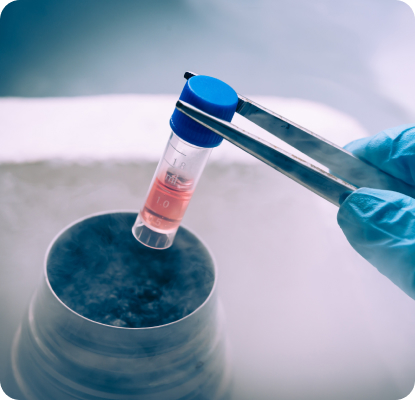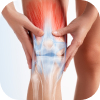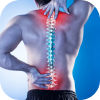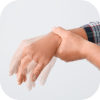Conditions That Can Be Treated With Stem Cells
Stem cell therapy is a type of regenerative medicine that uses your own cells to activate your body’s natural healing potential. Many medical treatments are limited in that they can only help minimize or alleviate symptoms caused by the injury or illness, but they are unable to eliminate the root cause.
Stem cells have the capacity to multiply and morph into the type of cells needed by the body to repair damaged cells or tissues naturally without using surgery. They have the ability to repair damage that was once considered irreparable, such as that done by degenerative disc disease.
Additionally, since the stem cells are taken from your own body, there is virtually no risk of rejection. Stem cell therapies are currently being researched and used to repair damage from many injuries and conditions, including:


Anti-Aging
Aging is something that happens naturally as a result of a complex collection of things like genetics, our environment, our lifestyle choices, etc. As this process progresses, our cells are also affected, and they begin wearing down, dying off, and no longer making healthy copies of themselves to keep everything looking good and working correctly. This is why wrinkles and lines form, we lose muscle strength, we begin to experience aches and pains, we lose bone density, we can begin to have cognitive issues, etc.
Stem cell therapy has shown promise in rolling back the hands of time, improving the texture of skin, boosting the immune system, and improving many of the areas that are affected by aging. Some of the benefits patients have reported include
- More energy
- Greater stamina for physical tasks
- Thicker and healthier hair
- Heightened libido
- Reduced discomfort & pain
- Improved strength
- Enhanced movement
- Boosted Immunity
- A more efficient immune system

Arthritis and Orthopedic Conditions
The term arthritis is used to describe joint pain and inflammation that result from over 100 varieties of the condition. It can affect anyone, regardless of age or gender, and it can happen gradually or suddenly and range from mild to severe. In some cases it can impede an individual’s ability to perform everyday tasks or hinder their mobility.
Some of the most common forms of arthritis include osteoarthritis and rheumatoid arthritis which can affect any location where there is a joint involved, such as the ankles, knees, hands, etc. Each bone that is joined in a joint has a protective layer at its end called articular cartilage, which allows the bones to glide over each other in a smooth movement. Arthritis causes inflammation and pain, and over time, cartilage deterioration, which eventually leaves no cushion between the bones. Stem cell treatments have been used to regenerate lost cartilage, and alleviate pain, and improve joint movement in some patients.

Autism
Autism Spectrum Disorder (ASD) is a neurological condition that stems from differences in the brain. Some individuals with ASD have a known genetic difference, but for the most part, scientists have not been able to isolate any one cause. ASD affects the way an individual would normally grow and develop and can range from mild to severe levels of function or delays.
The symptoms of ASD can vary widely and can affect an individual’s social skills, their ability to communicate, their behavior, and more. Stem cell therapy has been shown to be effective in improving symptoms in some patients with autism. One current case involves a young boy from Pakistan with severe autism who was nonverbal from birth and exhibited severe behavior issues. He underwent one round of stem cell treatment, and the parents were so amazed at the improvements they saw in their son within six months that they are doing a second treatment. They reported that he is now saying some simple words and can call them and his siblings by name. They have also seen marked improvement in his impulsive behavior.

Autoimmune Diseases
When the body’s immune system is functioning properly, there are cells that stand guard against harmful invaders like bacteria or viruses. In the case of an autoimmune disease, these guard cells get mixed up and begin to attack healthy cells and produce antibodies that destroy healthy tissue and impede the functionality of the body. More than 80 types of autoimmune diseases have been identified, including Type 1 diabetes, Hashimoto, psoriasis, multiple sclerosis, alopecia, lupus, celiac disease, and more.
Treatments that are available today for autoimmune diseases do not treat the condition itself but can provide relief from some of the associated symptoms. Infusions of stem cells have the ability to treat damaged nerve, muscle, and organ cells, which can slow down or stop the progression of an autoimmune disease. Since these cells have the capacity to become any type of cell, when injected into the target area, they can become healthy versions of the type of cell needed for that circumstance.
A woman in England was diagnosed with MS and began conventional treatments (chemo and medications). The disease continued to progress, and the side effects from her treatment were debilitating. She was experiencing muscle spasms, bladder issues, excessive stiffness, fatigue, and vision and memory problems. She chose to try stem cell therapy, and after her first treatment, she noticed her brain fog was much improved and she was able to concentrate, and after a short while, her vision was restored to normal. She has since continued to improve and is able to go to the gym, return to work, and play and run with her small child. She is still experiencing some spasms in her side, but her significant improvements have shown the stem cells to be effective in preventing further MS. progression.

Back Pain
Around 80% of the adult population in the United States experiences back pain during their lifetime, and in many cases, this type of pain is the result of an injury and is only temporary. For some individuals, back pain can be a chronic condition that interferes with their ability to live their lives. This type of pain is currently ranked as the leading cause of disability.
Stem cells can be injected into targeted areas, after which they begin to divide into different types of healthy cells and can become cartilage, tendon, ligament, bone, or other types of cells that can restore damaged areas and relieve chronic back pain.
One patient with degenerative disc disease had several failed attempts at pain relief through conventional treatments such as injections, physical therapy, and minimally invasive microdiscectomy surgery. Eight weeks after receiving stem cell therapy, the patient reported significant improvements in her flexibility and a huge decrease in muscle spasms and pain levels. By the third month after treatment, she said 90% of her pain was gone and she was back to skiing and playing golf.

Joint Issues
Most issues that individuals face are caused by some type of degenerative condition, such as arthritis. The protective material that provides insulation between the moving bones erodes, resulting in pain, immobility, and other issues.
Stem cells have shown the ability to replace cartilage and repair damage to joints. When used to restore issues with the knees, and similar areas, a series of treatments is often needed to achieve the desired results.

Diabetes
Diabetes is a disease that can take various forms, but it occurs when the body cannot produce or use insulin properly. To date, there has been no singular cause identified, nor is there a cure.
Stem cell therapy can help alleviate some of the symptoms, slow disease progression, and improve an individual’s quality of life. Patients who have undergone stem cell treatments for diabetes have seen improvements in blood sugar regulation, frequent urination, slow healing of wounds, having to urinate frequently, and more.
A man just shy of 40-years old living in India reported that before his stem cell treatment he was living with diabetes and sugar levels of around 320-360, some ulcers on his foot that had not healed in almost 2 years, and issues with his kidneys. Just weeks after his stem cell therapy, his sugar levels dropped to 110-130 and he noticed his skin looking more healthy. Both ulcers were completely healed within three weeks of the treatments, and his kidneys and other organs are registering as normal.

Neurodegenerative Diseases: (Parkinson’s, Alzheimer’s, MS)
This category of disease is recognized as one where the brain loses function due to the loss of neurons. These neurons control every function in the body, and when they fail, many processes are interrupted, such as speech, memory, stability, etc.
There are currently several medications that are used to treat patients with these diseases; most just help mitigate the symptoms that come along with them and do nothing to stop or reverse the disease’s progression. Neurons can regenerate when new stem cells are introduced into targeted locations. Stem cell therapy has given patients suffering from these types of conditions hope for the future.

Stroke
A stroke occurs when the flow of blood to the brain is blocked and the neurons (brain cells) that control all the functions of the human body are damaged or die. Strokes can be mild or severe and are sometimes fatal, but they often result in some type of disability or impairment.
Individuals often lose the ability to speak or use different parts of their body. The normal treatment after suffering a stroke is sometimes medication or surgery to ensure the blockage has been cleared, and then some type of therapy (speech and physical therapy) to restore as much functionality to the patient as possible.
Stem cell therapy has been shown to be effective in clinical trials and independent patient results in helping to restore their functionality after a stroke. One woman shared that after her stroke, she lost complete use of her arm and partial use of her leg, often requiring a wheelchair to get around. After receiving stem cell therapy, she said these limbs just “woke up” and she suddenly could use them again. She reported that the use of her arm was completely restored, and her leg is not perfect but so much improved that she no longer needs the wheel chair.

